The original Topping D10 has been quite a few years on the market already, quite long for a competitive DAC market, so the company brought a refresh in the form of D10s. Now let us dive into this review and check what’s changed and what’s not.
Build and Features
From the outside, it looks like nothing really changed. The design is exactly the same, with the same orange display and lack of any controls. The unit turns on and off automatically with your computer. The Remote is still not included and the volume is fixed, so D10s is a pure old DAC just like its predecessor.
Talking about connectivity, there’s still only one input and that’s the USB. Both optical and coaxial are actually digital outputs, and that means you can use D10s as a digital bridge that can also feed a digital signal to an external D/A converter. A pair of RCA connectors provide analog output with a fixed-line level of approximately 2 Volts.
Well, is there anything new you ask. Yes, there is, but on the inside. D/A converter went from Sabre ES9018K2M to a more capable ES9038Q2M. Add some circuitry optimization to it and we basically have a completely new product in our hands. Let’s give it a spin, shall we?
Sound Quality
Topping D10s is definitely a new and different DAC, sonically capable of taking down the original D10 with ease. The bassline is tight and well-controlled which lends this DAC a good sense of rhythm. Going above it, everything feels well balanced and D10s is a neither dark nor bright-sounding device. Vocals are well present and nicely focused, quite rich with details but not lacking body. The same goes for the instruments and I’m happy to report that D10s doesn’t lack details but it’s also not overly analytical and thin the way some Toppings used to be in the past.
In terms of dynamics, D10s sounds as lively and jumpy as any DAC in this price range. Fear not of thin and compressed presentation so typical for some earlier budget models coming out from China.
When it comes to the sound-stage, there’s decent width but not much depth to talk of. The separation between the instruments is very good, and there are sufficient focus and layering to make sense of busier tracks.
Comparisons
FX-Audio DAC-X6 MKI is an even more affordable DAC/AMP combo that I really like. Being a dedicated DAC however, has it’s perks and D10s offers a bit more of sound-stage depth. Other than that, the most obvious difference is a more full-bodied presentation and lack of any midrange dryness. So if you don’t need all of the perks X6 MKII offers, D10s is a more capable DAC.
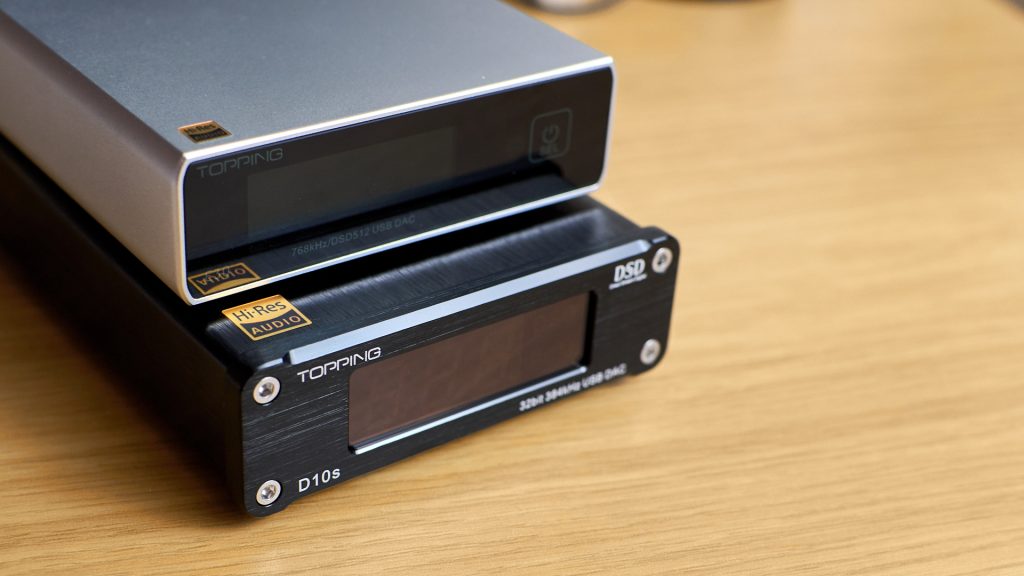
Topping D10s and E30
Topping E30 is a $30 more but offers a remote, more digital inputs, and a choice between pure DAC and preamp mode. There’s not much sonic difference out of the box, E30 has a smoother presentation, a wider sound-stage, and a weightier but slightly softer baseline. D10s, on the other hand, is more focused and better controlled in the bass region – so I’d call it a tie. But E30 does have an ace in its sleeve and that’s a separate power connector that D10s doesn’t have. Feed it with a low noise power supply such as iFi iPower and it will spread its wings, providing overall clarity and dynamics that D10s just can’t match.
Conclusion
Topping D10s looks the same, but it’s actually a proper upgrade on the inside. It is a capable device that will not disappoint the first-time DAC buyers or anybody moving from a few years old budget models such as the original D10 or D30. If there’s an argument against D10s, it would be the existence of a slightly more expensive and more feature-packed E30. That said if you don’t feel like needing those additional features, and you’re certain you wouldn’t upgrade your DAC with a low noise power supply, Topping D10s is as good a budget DAC as they come.
| TOPPING D10s – CHARACTERISTICS |
|
Power supply: DC 5 V / 0.5 A |
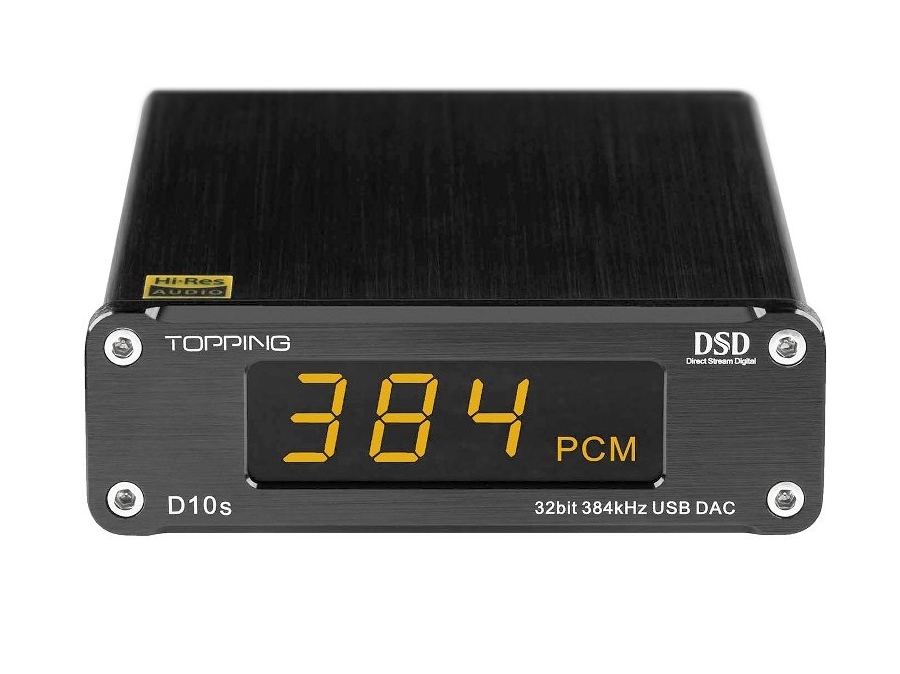

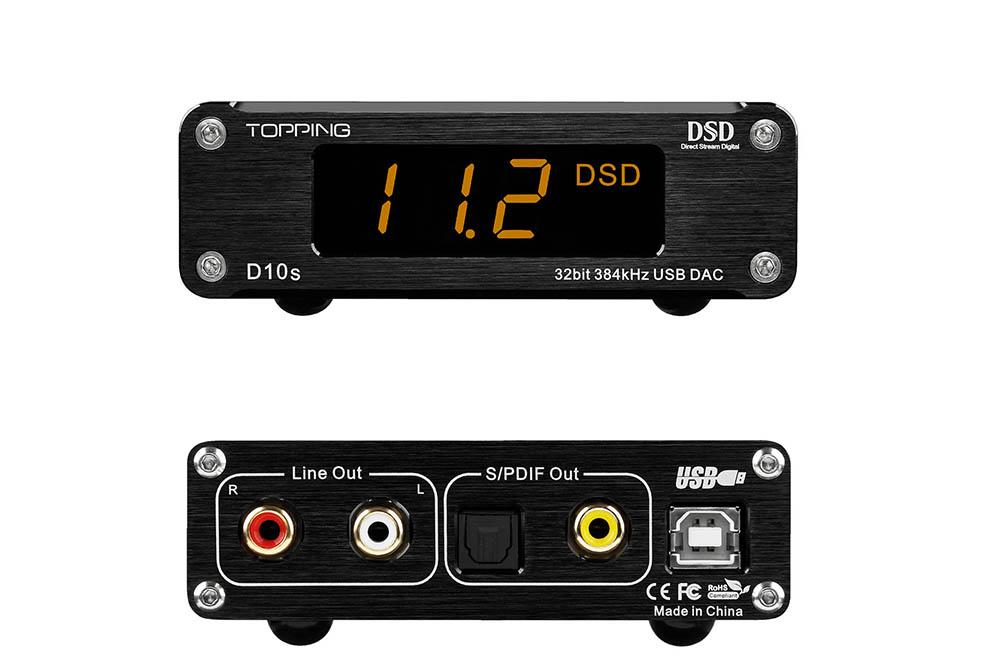
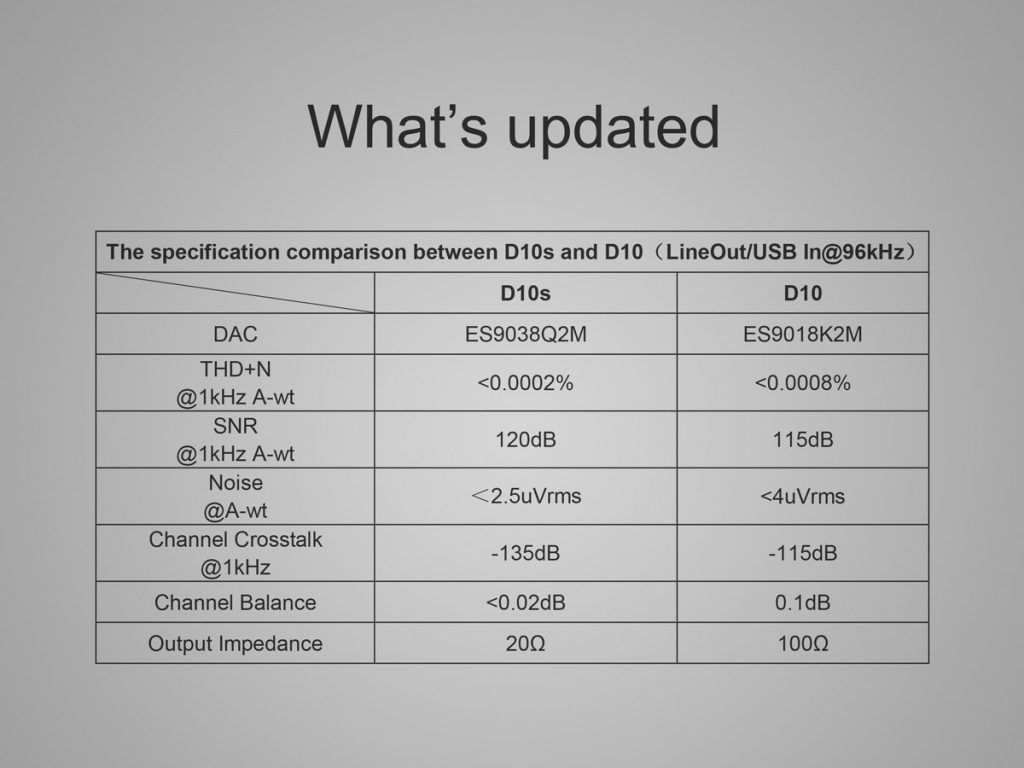
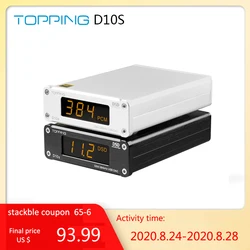



Hello Sir,
Did you try the D10S as a bridge between a laptop and a higher-end DAC and if you did, did it perform as a digital device filter/”decrapifier” to improve the USB signal from a laptop. At one point I was using a Musical Fidelity V LInk 2 between a laptop and a DAC that rounded the rough edges of the USB signal from a laptop and made the sonic presentation fuller, more fluid, better timing, and enjoyable to listen to…until the V Link 2 died……
Thanks
I haven’t tried to use it that way. As far as I know, D10s doesn’t really do signal regenerating/isolating. It can still help a little bit, as it might have a more capable USB receiver solution than the one used in your DAC. Unfortunately, I sold D10s soon after testing it to clear the budget for new devices, so can’t try that function anymore.
Thank you…I read an article way back using the original D10 compared to the Schiit “decrapifier” and the D10 performed and measured much better than the Schiit….cheers!
What is the dac+amp that you have tested with most immersive bass?
Hello Sir
I am looking to purchase my first DAC to use it with my computer desktop and headphone only
i am hesitating between two models, Topping D10s, and Fx-audio DAC-X6 MKII.
But the Topping D10s seem to lack with connectors. Its not possible to use it for computer and headphone ?
Hi. That’s right, D10s don’t have headphone out, it needs separate headphone amplifier such as Topping L30. FX Audio DAC-X6 MKII has everything you need, it sounds great, it’s very powerful too. I highly recommend it to anyone who is making an entry into hifi.
Thank you very much , it will help me a lot to make up my mind but yes i think i will get the FX Audio DAC-X6 MKII, its all i need .
I was wondering if using an IFI AUDIO IPOWER 5V low noise power supply with a Raspberry Pi streamer which would also be the power source for D10s might provide similar improvements to what you experienced when using the IFi power supply with the E30?
Hi, I haven’t tried that combination but I believe it should improve things a bit.
the Topping D10s have preamp? can connect direct at a power amp?
No it doesn’t have a preamp, it’s a fixed volume DAC. What you need is a Topping E30 https://iiwireviews.com/topping-e30-review-small-wonder
I have a Audiolab 6000A with a decent onboard DAC with SPDIF Inputs. Any guesses on how a pi 4 connecting USB to D10s then Coax SPDIF to 6000A would compared to a pi 3B+ Digione connecting Coax SPDIF to 6000A ?
When used as follows:
iPad > Topping d10s > External DAC (via coaxial) I was able to control the volume with the iPad. I don’t know if this will also work with the analogue ouputs of the Topping with the external DAC removed from the chain.
I am using this 3 part chain as my Rega DAC’s usb input is inferior to its coaxial inputs, so would actually have liked if volume control was disabled for the iPad (prefer to control volume on my amp).
Strangely enough, if I feed the iPad directly to my Rega DAC’s usb input, the volume is fixed. Guess the DAC controls whether it allows a fixed or variable input.
Connecting the iPad to the DAC’s, in both cases I use Apples camera connector to make it work.
This is the most useful device from Topping. I can use it either as a DAC or as a bridge. In my particular setup, I use it as a USB-to-optical bridge, feeding my Hugo2. The sound coming out of the optical output is just really nice, with very low noise and galvanically isolated coming to the Chord Hugo2. D10s improved the sound quality of my Hugo2 by a lot, way better than using USB input of the DAC.